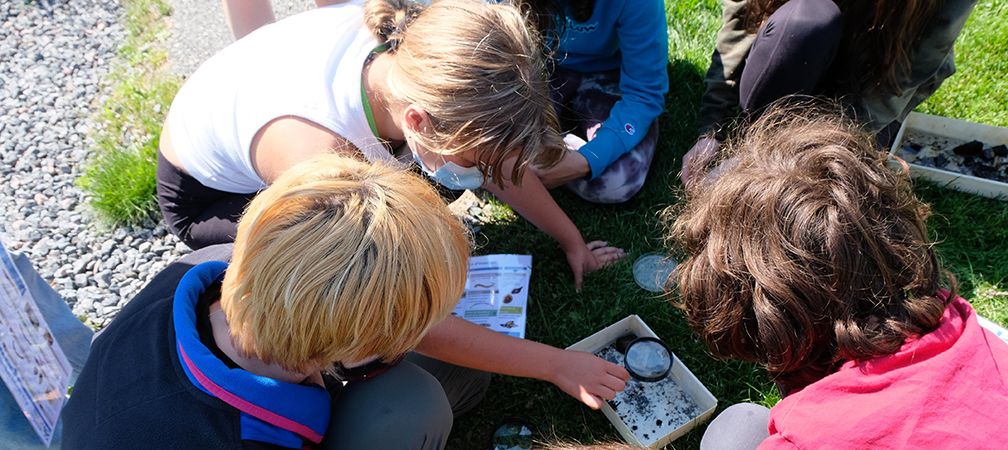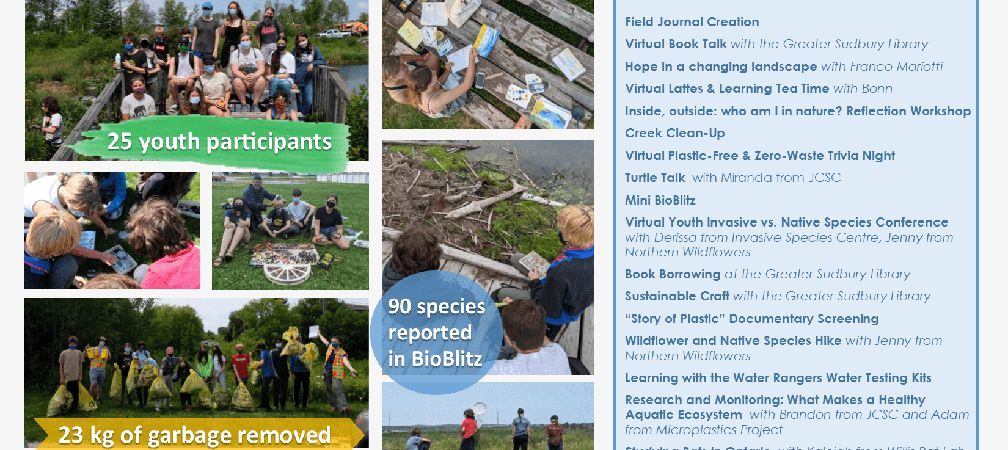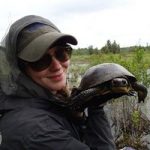In July 2021, Junction Creek Stewardship Committee (JCSC), a grassroots environmental organization in N’Swakamok/Sudbury, spearheaded a free month-long program for youth aged 13 to 17 to provide accessible nature-based activities that facilitated meaningful connections with nature: Empowering Youth for Junction Creek. The program included activities like outdoor hikes, tree planting, art projects, and discussions on environmental protection. Here are some of the lessons that program organizers, Lili, Lindsay, and Miranda learned along the way.

Lesson #1: Acknowledge inexperience, but don’t let that hold you back
At the beginning, Lili felt as though she was too young, inexperienced, and alone to plan such a big program. With encouragement from other JCSC staff, and insights from youth voices as members from a local Water Walk (Nibi Nikwejiwong), Plenty Canada, Ontario Youth Circle for Mother Earth, and friends and family, she felt supported to spearhead this important project. Balancing our own learning while moving towards an actionable goal was a great lesson on not letting the fear of failure stand in the way of something meaningful.
Lesson #2: Bring in the experts!
We partnered with local experts and Knowledge Holders who engaged youth on topics such as wildflower diversity, turning passion into action, and Traditional Teachings. These collaborations allowed us to connect youth with a rich network of environmental leaders and highlight diverse voices. We became facilitators as opposed to educators. We were mindful that this experience was about what we could all learn from each other.

Lesson #3: Ask youth what they want, don’t assume
On our first day, we asked youth what they were excited and nervous about. Overwhelmingly, people shared concerns about the length of programs. Together, we decided to shorten in-person sessions to two hours and virtual sessions to one hour. Deciding on the structure of the program together ensured that youth felt supported in the space we were creating.
Lesson #4: Have clear, value-driven goals
From the very beginning, Lili’s focus was accessibility. Therefore, making the program free was essential. When Lindsay joined in, she wanted to emphasize inclusivity and a sense of belonging. Consequently, she invited discussions around gender and identity and was committed to highlighting diverse voices within the environmental field. This value-driven approach helped us stay focused and make improvements for future years.

Lesson #5: Be flexible, especially in a COVID-context
Coordinating during this pandemic meant we had to contend with constant uncertainty. We minimized stress around program changes by maintaining active communication and with the support of patient families and caregivers.
Lesson #6: Learn from your mistakes
One of Lili’s ideas was to have youth dream-up and implement a community project, empowering them to take an idea from start to finish. However, we quickly learned that if we wanted to successfully complete this component of the program, we would need to designate more time to it. Alternatively, a program without a project, where teenagers simply get outside, explore, and play, also has an important place in the community.

Lesson #7: Celebrate the little successes
Despite all the doubt and chaos that we experienced behind the scenes, we received some great feedback from our 2021 Empowering Youth for Junction Creek program and in the end offered a total of 33 sessions guided by 19 local experts/ Knowledge Holders. It’s easy to fixate on the ways in which we could have done better, but we also took time to celebrate what we had accomplished: a brand-new program, during COVID, that brought 25 youth together and connected them with nature in a safe and welcoming way. We are looking forward to adapting the program and offering it again in 2022!
Junction Creek Stewardship Committee is a charitable organization that creates hope through environmental restoration. They are located within N’Swakamok/Sudbury in Robinson-Huron Treaty territory and on the traditional lands of the Anishinaabeg.

Lili Paradi (she/her) is a Master of Science Communication student at The University of Edinburgh and former Environmental Outreach and Science Communication Intern with the Junction Creek Stewardship Committee. She is an adventurer at heart, whether it is through travelling, hiking, spending time outdoors or reading a good book.

Lindsay Potts (she/they) is a Wildlife Naturalist with the Junction Creek Stewardship Committee. She holds an M.Sc. in Biology from McGill University and is passionate about freshwater ecosystems, Pugnose Shiner, and being outside.

Miranda Virtanen (she/her) is the Executive Director for the Junction Creek Stewardship Committee. She holds a BSc in Wildlife Biology and a Grad Cert in Natural Resources Law Enforcement and has an extensive background in species at risk reptile conservation and outreach.
